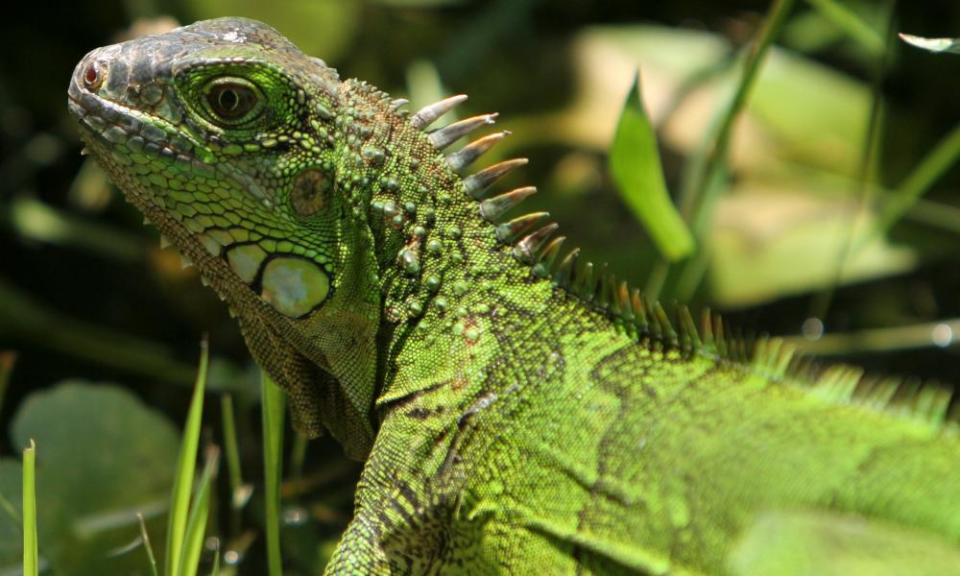Toddler’s mystery infection traced back to cake-snatching iguana

It could almost be a fable from Aesop, or a story from the Brothers Grimm: the toddler, the lizard and the cake. But for one small child, whose baked treat was snatched by an iguana, it was a tale with a twist.
Doctors have revealed that the toddler ended up with an unusual infection after being bitten by the reptile as it tried to steal a bite of cake.
In the presentation “Never get between an iguana and his cake: a cautionary tale”, due to be given at the European Congress of Clinical Microbiology and Infectious Diseases in Copenhagen later this month, Dr Jordan Kit Mah, a medical microbiologist at Stanford University, describes how the three-year-old was on holiday with her parents in Costa Rica when the attack occurred.
As she tucked into the treat on a beach, the lizard suddenly appeared and attempted to steal the cake, biting the back of the child’s hand in the process.
“It was trying to mark its territory or something like that,” Mah said.
The girl was disinfected and given five days of the antibiotic amoxicillin, with the wound subsequently healing.
However, five months later the toddler’s parents noticed a lump on the back of her hand, around the size of a coin. Though it was not painful, it began to grow in size and became a reddish-bluish colour.
Ultrasound imaging initially led doctors to believe the bump could be a ganglion cyst, but with the size increasing and it becoming painful, an orthopaedic surgeon decided to investigate further given the atypical features.
The lump was found to contain a thick white mass and pus, with further examination revealing dead tissue, clusters of white blood cells and the presence of bacteria later identified to be Mycobacterium marinum – an organism known to infect fresh and marine water fish. While closely related to the bacterium that causes human tuberculosis, it does not itself cause the disease in humans.
“[Nontuberculous mycobacteria] are found in the environment, they are very ubiquitous,” Mah said. “Some of them are capable of causing skin and soft tissue infections like this.”
Mah said the delayed onset of the girl’s infection was not surprising as the bacteria are very slow growing with a long incubation period, from exposure to the onset of symptoms. “This came on insidiously and became a problem later on,” he said.
With the bacteria resistant to amoxicillin, the toddler was treated with the antibiotics rifampin and clarithromycin.
It is not the first time a human has developed this infection, with cases generally associated with aquatic activity or exposure to fish tanks. While early cases in Britain were linked to swimming pools, experts say infections related to such facilities have dramatically declined.
David Turner, a professor of clinical microbiology at the University of Nottingham who was not involved in the new case, said infections could also occur after cuts to the hands when opening oysters.
“I’ve never heard of this infection after a reptile bite,” he said. “Although reptiles do carry some very toxic organisms, including salmonella, which is why hand washing is always advised after handling reptiles.”
Experts have found that the bacteria grow best at temperatures of about 30C, which is below the average human body temperature of 37C.
Mah noted that the cold-blooded nature of iguanas may make them the perfect reservoir.
He said he hoped the report, thought to be the first case related to an iguana wound, would raise awareness that lizards such as iguanas can carry Mycobacterium marinum as well as pass it on to humans. He added that the case highlighted the importance of using lower temperatures to grow and investigate pathogens involved in infections after reptile bites.
“If you are thinking about this organism, you have to know the right methods to diagnose it in the first place,” he said.

 Yahoo News
Yahoo News 